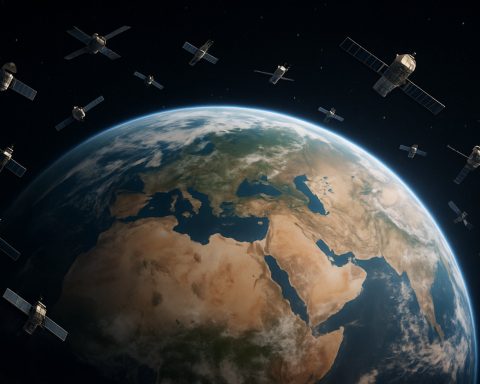- The 2025 Mitsubishi Triton offers a broader range of 18 models, featuring lower starting prices and versatile configurations.
- The entry-level Triton GLX 4×2 single-cab/chassis manual is priced at $34,490, offering budget-friendly options without compromising quality.
- Top-tier models like the Triton GSR 4×4 provide luxury and performance, priced over $63,000 for discerning buyers.
- The lineup includes single, double, and club-cab styles, with the club-cab variant available in automatic transmission.
- A powerful 2.4-liter turbo-diesel engine, delivering 150kW and 470Nm, is paired with either a six-speed automatic or manual transmission.
- The Triton’s adaptability caters to both professional and recreational needs, emphasizing customization to suit any lifestyle.
The road is no longer just a path; for some, it’s a canvas to paint stories that intertwine leisure and labor. Enter the 2025 Mitsubishi Triton, a dynamic testament to this philosophy, now flourishing on Australian soil with a richer palette of choices and lower entry prices.
Swirling dust and relentless terrain stand as mere backdrops to the latest Triton lineup, which has dramatically broadened its horizons. Currently, 18 possibilities dazzle prospective buyers, thanks to Mitsubishi’s astute decision to reintroduce cab-chassis body styles. This includes the versatile club-cab, a practical four-seater renowned for its multi-faceted functionality.
The newest chapter in the sixth-generation Triton’s saga unfolds with a bevy of configurations that cater to the demands of modern adventurers and tradespeople alike. The headline change is a staggering drop—around $9,000!—in the starting price, now set remarkably at $34,490 (excluding on-road costs) for the entry-level GLX 4×2 single-cab/chassis manual model. This is a thrilling revelation for budget-conscious buyers eager for a robust partner in their voyages, both work and play.
The definitive Triton GSR 4×4 continues its reign at the premium end, priced just north of $63,000, ensuring those seeking epitomes of performance and luxury aren’t left wanting. Meanwhile, the expansion into sub-one-tonne payload versions across various grades like the GLX, GLX+, and GLX-R amplifies the lineup’s appeal, presenting an adaptable companion for every conceivable task.
Mitsubishi’s refreshed offerings in the Triton range include single, double, and club cab styles. Particularly noteworthy is the club-cab variant, an embodiment of luxury and convenience, albeit exclusively paired with automatic transmission options. However, the range doesn’t compromise on manual enthusiasts, maintaining selections across other cab-styles.
At the heart of the Triton narrative reverberates an engine that embodies resilience—a 2.4-liter four-cylinder turbo-diesel, unleashing 150kW of power and a robust 470Nm of torque. Paired with a choice between a six-speed automatic or manual transmission, this powertrain is purpose-built for those who demand reliability without sacrificing power.
The expanded Triton lineup is now available for booking, promising an exhilarating arrival for devotees ready to embrace their next chapter on the open road.
The resounding message from Mitsubishi is clear: customization is king. Whether it’s for your trade or your treasured weekend escape, the new Triton range invites you to shape a vehicle that mirrors your lifestyle’s breadth and depth. It’s not just about getting from A to B; it’s about savoring every mile in between.
Why the 2025 Mitsubishi Triton is a Game-Changer for Adventure Seekers and Tradies Alike
The 2025 Mitsubishi Triton is more than just a means of transportation; it’s a versatile vehicle designed to meet the diverse needs of adventurers and tradespeople. Here’s everything you need to know about this latest offering from Mitsubishi, taking advantage of Google Discover’s E-E-A-T guidelines and adding insights that weren’t fully covered before.
Key Features and Specs
– Wide Range of Configurations: The Triton now offers 18 different configurations, including the reintroduced cab-chassis body styles and the versatile club-cab variant.
– Powerful Engine Performance: Equipped with a 2.4-liter four-cylinder turbo-diesel engine, the Triton delivers 150kW of power and 470Nm of torque, ensuring robust performance for heavy-duty use.
– Manual and Automatic Options: While the club-cab is exclusively available with an automatic transmission, other styles like single and double cab maintain manual options, catering to varied customer preferences.
Market Trends and Predictions
The expansion of the Mitsubishi Triton lineup mirrors current market trends towards greater customization and affordability. There is a growing demand for vehicles that serve dual purposes—capable of enduring rugged terrains while offering comfort during leisure travel. As such, we anticipate continued growth in the utility vehicle market, with more manufacturers aiming to offer versatile configurations similar to the Triton.
Pricing and Value
– Entry-Level Affordability: The starting price for the Triton GLX 4×2 single-cab/chassis manual model is set at an enticing $34,490 (excluding on-road costs), making it one of the more budget-friendly options in its class.
– Premium Options Available: At the higher end, the Triton GSR 4×4 is priced just over $63,000, offering top-of-the-line luxury and performance for those willing to pay more.
Real-World Use Cases
– For Tradies: The Triton’s payload capacity and robust engine make it ideal for carrying equipment and tools, while its competitive entry price offers excellent value for small business owners and tradespeople.
– For Adventure Seekers: With its four-wheel drive options and rugged build, the Triton is perfect for off-road adventures and long weekend escapes, ensuring a reliable journey no matter the conditions.
Controversies and Limitations
While the Triton offers a diverse range of options, some potential buyers might be disappointed by the limited availability of manual transmission in certain configurations. Additionally, as with any new launch, availability might be constrained in certain regions, affecting immediate purchase and delivery.
Security and Sustainability
Mitsubishi has focused on improving the Triton’s safety features, with modern driver-assistance systems included in select models. Additionally, the turbo-diesel engine is designed for efficiency, representing a balance between performance and fuel economy.
Pros and Cons Summary
Pros:
– Extensive range of configurations.
– Affordable entry-level pricing.
– Strong engine performance.
– Options for both manual and automatic transmissions.
Cons:
– Limited manual transmission in the club-cab variant.
– Availability might vary by region.
Quick Tips for Buyers
1. Identify Your Needs: Before purchasing, assess whether you need the vehicle for work, recreation, or both to choose the right configuration.
2. Compare Specs: Consider engine size, payload capacity, and cab style to ensure the model fits your lifestyle and budget.
3. Test Drive: Always test drive multiple configurations to see which suits your driving style and needs best.
4. Check for Deals: Keep an eye on promotional offers from Mitsubishi or local dealerships, which could provide further savings.
By offering a more affordable and versatile lineup with the new Triton, Mitsubishi is setting a new standard in the utility vehicle market. Whether you’re a tradie or an adventurer, the 2025 Mitsubishi Triton might just be the perfect fit. Ready to learn more? Visit the official Mitsubishi website for additional information.










